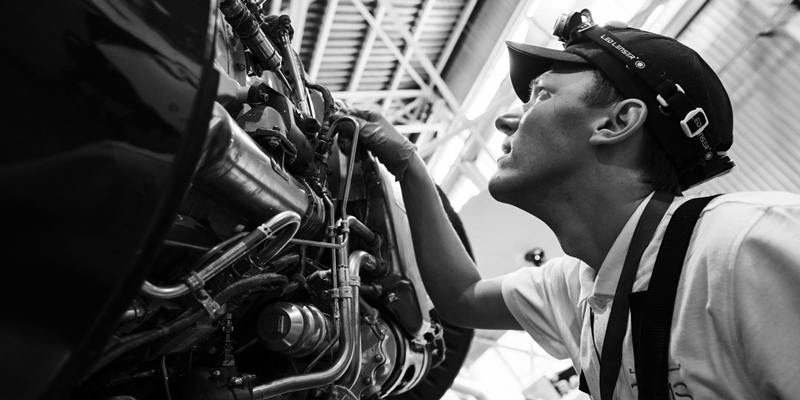The Crucial Role of Avionics Engineer

When thinking about jobs in aviation many instinctively turn to pilots and flight crew, but in reality there are thousands of career opportunities for specialists in many fields – from ground control to engineering, to communications. Jet MS, a global provider of base and line maintenance services for business and regional aircraft, opened doors to a career in aviation industry for hundreds of people in maintenance, engineering and other fields. Some positions are pretty self-explanatory and clear, while others might raise a few questions. One of such lesser known specialties is avionics engineering. Petras Kaukėnas, avionics engineer at Jet MS, talks about the position, what it takes to join avionics field and about his time at the company.
Becoming an avionics engineer
Avionics engineers are responsible for maintenance on aircraft autopilot, communication, navigation and electrical systems. Petras Kaukėnas explained what is needed in order to become one: “To become avionics engineer you must pass EASA (European Union Aviation Safety Agency) Part-66 exams and gain experience in aircraft maintenance. Also, you must pass aircraft type theoretical and practical training for a particular aircraft model. The final step is to finish on-the-job training and apply for a licence.”
Troubleshooting and close cooperation
Working as avionics engineer requires careful planning and task management. “Prior to the aircraft arrival we prepare a plan, in what order tasks must be done,” says Petras Kaukėnas. “Usually maintenance tasks, requiring Engine and APU run-ups in the beginning of maintenance, are done. Also, troubleshooting, requiring aircraft to be outside the hangar, are performed. Later on, tasks, which require aircraft to be fully operational, are done and components, requiring to be sent for repair or overhaul, are removed.
Close collaboration with mechanics is required, because we don’t want to stop each other works for a long time. Later on, inspections in various aircraft zones are performed. After those inspections are done, non-conformities are repaired. Then assembly, testing and release to service are done.”
Like any other work, there are some challenges Petras has to face. “Complex modifications are one of the most challenging jobs. Especially when there are several modifications in the same project and those modifications are related with each other,” he explains and adds: “But every task can be completed successfully. Most important at this job is strictly following manufacturer’s and our organisation’s procedures.”
Crucial importance of teamwork
“Despite passion and knowledge being extremely important skills, if you want to be a valuable specialist, being a team player is an essential skill too. There is nothing that a good team can’t do. If an aircraft is released on time, it is precisely because of good teamwork,” claims Petras Kaukėnas.
Jet MS provides a variety of maintenance services and avionics engineering is one of them. “It is impossible to provide full maintenance package without mechanics or avionics engineers. Both are equally essential and company can’t run their business without one of these services,” says Petras.
Industry changes take time
According to Petras Kaukėnas, the whole aviation industry is not changing too fast. “To introduce new models of aircraft or new systems into the aircraft can take up to 10 years or even more,” explains the avionics engineer. “But anyway, the aircraft avionics system technologies are moving forward and new aircraft have advanced avionics. Diagnostic systems are improving too and modern aircraft can reduce workload of determining issues significantly. For example, aircraft parameters and status can be monitored on the ground anytime, even when aircraft is in flight.”
2020 in avionics
“The Covid-19 pandemic forced the whole aviation industry to slow down and maintenance and engineering fields are not an exception. Aircraft were flying less frequently during the pandemic, so less heavy maintenance project were needed,” says Petras. “Regardless, we have noticed that business aviation began recovering pretty early in the year and even saw growth. People who have never flown private chose to travel while minimising the number of contact points experienced during regular passenger flight procedures.
2020 also brought a greater need for remote work. While some Jet MS departments were able to switch to remote operations, avionics and mechanics, technicians and engineers had to stay put. In our environment, the only thing that changed is work culture. Wearing masks and hand disinfection became a new normal.”
2021 predictions
“As global vaccination gains momentum, travel restrictions will be lifted and with that hundreds of aircraft that are currently grounded will return to operations. MRO services will be in high demand for both civil and business aviation,” says Petras.
By Vilma Vaitiekunaite
Chief Communications Officer.
